Shaving cream is an essential part of a smooth and comfortable shaving experience, but many store-bought options can be expensive or contain harsh chemicals. Making your own DIY shaving cream is a simple, cost-effective, and natural alternative that you can customize to suit your preferences. With just a few basic ingredients, you can create a luxurious cream that nourishes your skin while providing a close shave. This guide explores the key aspects of how to make diy shaving cream.
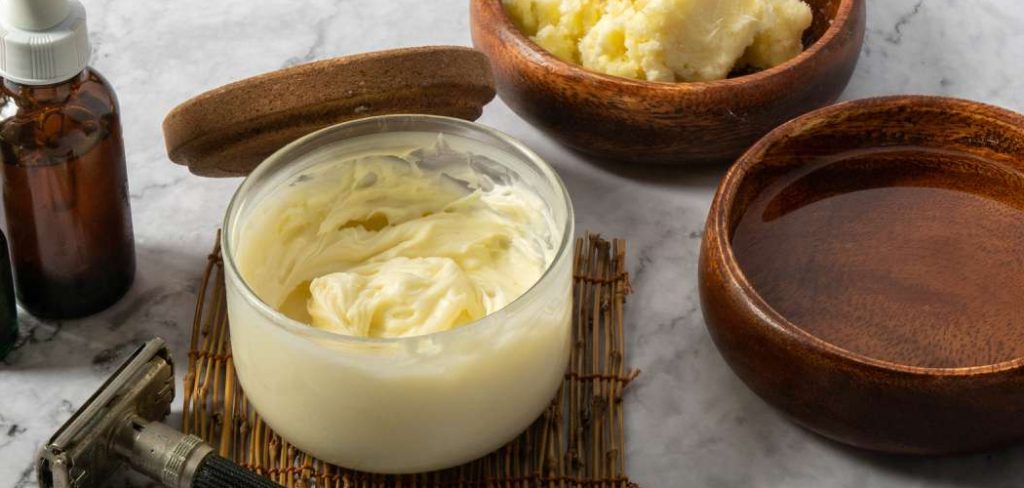
Why Choose DIY Shaving Cream
Opting for DIY shaving cream comes with numerous benefits, making it a superior choice over many commercial products. Firstly, creating your own shaving cream allows you to control the ingredients, ensuring it’s free from harsh chemicals, synthetic fragrances, and preservatives that can irritate sensitive skin. This also makes it an excellent option for individuals with allergies or specific skin concerns.
Additionally, DIY shaving cream is often more cost-effective in the long run, as it uses simple, natural ingredients that can be easily sourced and used for multiple batches. Beyond practicality, customizing your shaving cream gives you the flexibility to incorporate nourishing elements like aloe vera, coconut oil, or essential oils, offering a spa-like experience at home while keeping your skin hydrated and smooth.
The ability to tailor it to your specific needs makes DIY shaving cream a sustainable, healthier, and more personal choice.
Common Ingredients in DIY Shaving Cream
Creating your own shaving cream allows you to choose natural, skin-friendly ingredients tailored to your preferences. Some of the most common ingredients include:
- Shea Butter: Known for its moisturizing and soothing properties, shea butter serves as an excellent base for shaving cream, helping to prevent dryness and irritation.
- Coconut Oil: This versatile ingredient offers hydration, antibacterial benefits, and a smooth glide for your razor.
- Aloe Vera Gel: Packed with antioxidants and vitamins, aloe vera provides a cooling and calming effect, making it ideal for sensitive or irritated skin.
- Essential Oils: Oils such as lavender, tea tree, or eucalyptus can add a pleasant fragrance while offering additional antibacterial, calming, or energizing benefits.
- Castile Soap: Often used for its mild, natural cleansing properties, castile soap can help create a smooth lather for effective shaving.
- Sweet Almond Oil or Jojoba Oil: These lightweight oils are excellent for enhancing hydration without feeling greasy, making them perfect for softening the skin.
By combining these natural and nutrient-rich ingredients, you can craft a shaving cream that is both luxurious and tailored to your specific skincare needs.
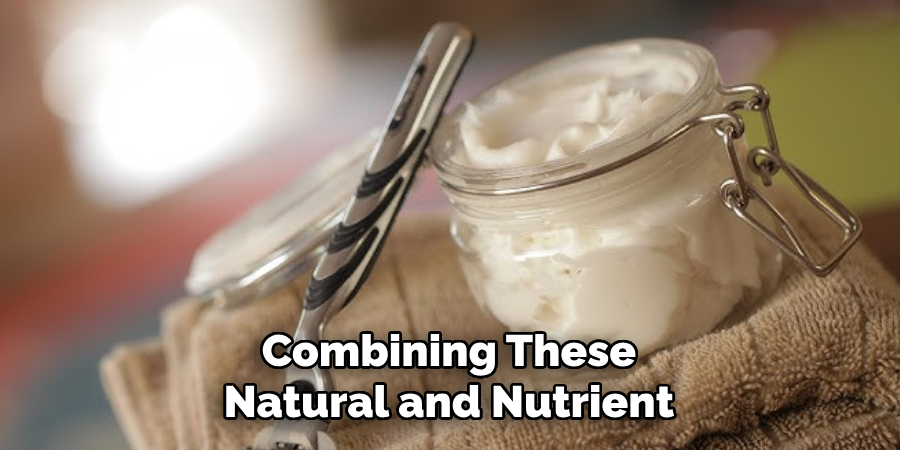
10 Steps How to Make Diy Shaving Cream
1. Coconut Oil and Shea Butter Cream
One of the richest and most nourishing shaving cream recipes starts with the luxurious pairing of coconut oil and shea butter. Begin by melting 1/2 cup of shea butter and 1/2 cup of coconut oil in a double boiler until they are fully liquified. Remove from heat and let the mixture cool slightly. Once it begins to solidify, whip it with a hand mixer until it reaches a light, fluffy consistency.
Store in a clean jar or airtight container. This cream not only provides a smooth glide for your razor but also deeply moisturizes the skin, reducing irritation and leaving behind a soft, silky finish. It is especially effective for dry or sensitive skin and can be enhanced with essential oils like lavender or tea tree for added benefits.
2. Olive Oil and Castile Soap Shaving Cream
For those who prefer a lighter, lathering formula, olive oil combined with castile soap makes an effective and natural solution. Mix 1/4 cup of liquid castile soap with 1/4 cup of distilled water, 2 tablespoons of olive oil, and a few drops of essential oil like peppermint or eucalyptus.
This mixture can be stored in a pump bottle for easy dispensing. The castile soap helps create a gentle lather while olive oil moisturizes and soothes the skin. This method is great for people looking for a vegan, no-fuss, and low-cost shaving cream alternative that’s still skin-friendly and effective.
3. Aloe Vera and Glycerin Gel Shaving Cream
Aloe vera gel is known for its soothing properties, and when combined with glycerin, it makes a perfect hydrating shaving cream, especially for those prone to razor burn. Combine 1/2 cup of pure aloe vera gel with 2 tablespoons of vegetable glycerin and 1 tablespoon of jojoba or almond oil. Blend until smooth and transfer into a squeeze bottle.
This formula not only helps the razor glide but also cools and calms the skin after shaving. The glycerin draws in moisture, keeping the skin soft, while the aloe reduces inflammation and heals any nicks or irritation.
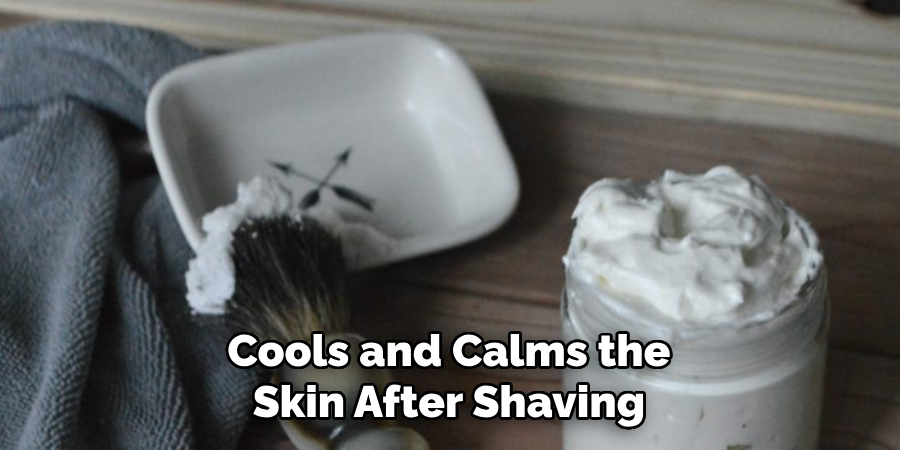
4. Whipped Cocoa Butter Shaving Cream
For a luxurious twist, cocoa butter creates a creamy base with a subtle chocolate scent. Melt 1/4 cup of cocoa butter with 1/4 cup of coconut oil, let it cool slightly, then whip it with a hand mixer until fluffy. Add a teaspoon of vitamin E oil for added skin nourishment and a few drops of essential oil if desired. This shaving cream is thick, rich, and perfect for cold weather when skin tends to be drier and more prone to flaking. It provides a smooth barrier for shaving while conditioning the skin and locking in moisture.
5. Bentonite Clay Shaving Cream
Bentonite clay adds a natural slickness to shaving cream that helps razors glide effortlessly and reduces the chances of cuts or razor bumps. Start by whipping together 1/2 cup shea butter and 1/2 cup coconut oil until fluffy. Slowly mix in 2 tablespoons of bentonite clay and stir until well incorporated. You can also add a few drops of tea tree oil for its antibacterial properties.
The clay adds a smooth, protective texture and also helps draw out impurities from the skin. This is a great option for those with oily or acne-prone skin who want both a clean shave and a detoxifying treatment.
6. Honey and Castile Soap Shaving Cream
For a naturally antibacterial shaving cream that suits sensitive skin, blend together 1/4 cup of liquid castile soap, 1 tablespoon of raw honey, 2 tablespoons of almond oil, and 1/4 cup of distilled water. Shake the mixture well and pour it into a pump bottle.
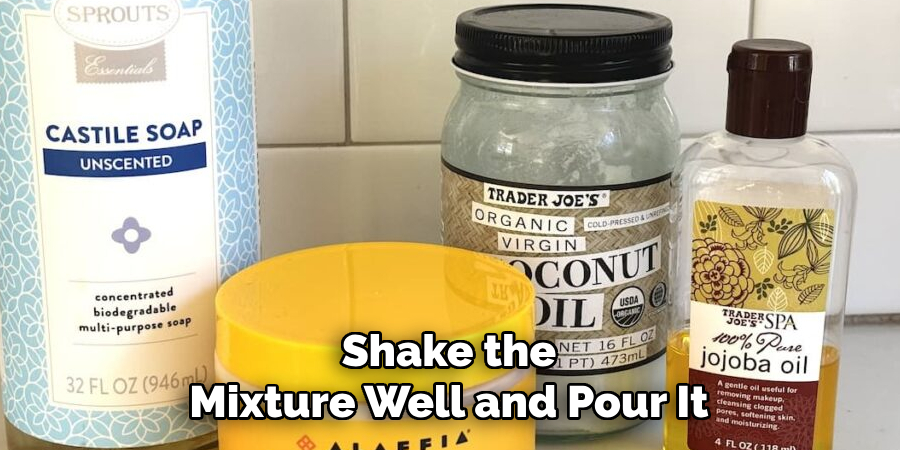
The castile soap helps to lather, while honey soothes irritation and fights bacteria. Almond oil ensures the skin remains moisturized and soft. This method is lightweight, perfect for quick shaves, and leaves the skin feeling smooth and refreshed. It’s especially good for use in warmer climates or for those with combination skin.
7. Yogurt and Honey Cream
For an ultra-soothing and cooling shave, plain unsweetened yogurt combined with honey works wonders. Mix 1/4 cup of plain yogurt with 1 tablespoon of raw honey. This mixture doesn’t store well for long periods, so it’s best made fresh each time. Apply directly to the skin before shaving. The lactic acid in yogurt gently exfoliates while the honey heals and hydrates. This natural shaving cream is ideal for sensitive skin or those with frequent irritation after shaving.
It’s also an excellent option for shaving more delicate areas like underarms or the bikini line.
8. Vegan Whipped Mango Butter Cream
For a fully vegan and exotic alternative, mango butter provides a wonderful base for a whipped shaving cream. Combine 1/2 cup mango butter, 1/4 cup coconut oil, and 2 tablespoons of sunflower or avocado oil. Melt together, then allow the mixture to cool. Whip until fluffy, then transfer into a container. This rich blend softens hair and skin, making shaving smoother and more comfortable. Mango butter is also packed with vitamins A and E, offering antioxidant protection and improving skin texture over time.
The whipped texture is ideal for use in both men’s and women’s shaving routines.
9. Almond Milk and Oatmeal Gel
A gentle, hypoallergenic option involves using colloidal oatmeal and almond milk. Soak 2 tablespoons of finely ground oats in 1/4 cup of warm almond milk for 10 minutes. Strain the mixture to remove solids and mix the liquid with 2 tablespoons of aloe vera gel and 1 teaspoon of sweet almond oil. This gentle gel works well for reactive or easily inflamed skin.
Oatmeal soothes irritation and helps to reduce redness, while almond milk offers hydration and a creamy texture that helps razors glide easily over the skin.
10. Lanolin and Castor Oil Shaving Cream
Lanolin, a natural moisturizer derived from wool, paired with castor oil creates a deeply conditioning shaving cream perfect for coarse or curly hair types. Melt 2 tablespoons of lanolin with 1/4 cup of coconut oil. Once cooled, stir in 2 tablespoons of castor oil and whip until creamy. This heavy-duty cream softens tough hair, making it easier to shave and reducing tugging or irritation.
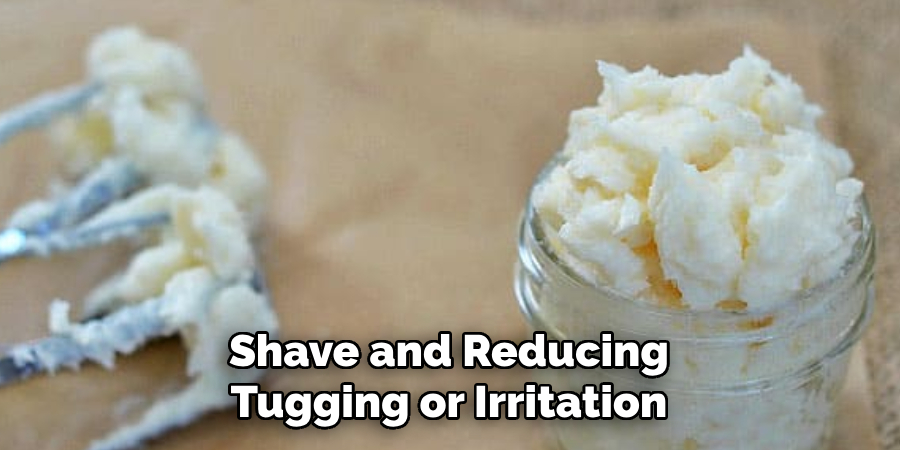
Castor oil also adds a slight slickness and helps nourish the skin post-shave. This method is ideal for men’s facial shaving or anyone with thick body hair seeking a close, comfortable shave.
Conclusion
Homemade shaving creams offer a customizable, natural, and skin-friendly alternative to store-bought foams and gels. Whether you’re looking for something deeply moisturizing, detoxifying, or tailored to sensitive skin, there’s a DIY method that fits the need.
From simple blends of oils and butters to more complex emulsions with aloe, clay, or yogurt, these 10 methods provide effective options using easily sourced ingredients. Thanks for reading our blog post on how to make diy shaving cream! We hope you found it helpful and informative.
About
Jennifer Branett is a distinguished figure in the world of Diy design, with a decade of expertise creating innovative and sustainable Diy solutions. His professional focus lies in merging traditional craftsmanship with modern manufacturing techniques, fostering designs that are both practical and environmentally conscious. As the author of diy, Jennifer delves into the art and science of furniture-making, inspiring artisans and industry professionals alike.
Education RMIT University
(Melbourne, Australia) Associate Degree in Design (Jennifer Branett) Focus on sustainable design, industry-driven projects, and practical craftsmanship. Gained hands-on experience with traditional and digital manufacturing tools, such as CAD and CNC software.
Nottingham Trent University
(United Kingdom) Bachelor’s in diyfastly.com and Product Design (Honors) Specialized in product design with a focus on blending creativity with production techniques. Participated in industry projects, working with companies like John Lewis and Vitsoe to gain real-world insights.
Publications and Impact
In diy, Jennifer Branett his insights on indoor design processes, materials, and strategies for efficient production. His writing bridges the gap between artisan knowledge and modern industry needs, making it a must-read for both budding designers and seasoned professionals.


